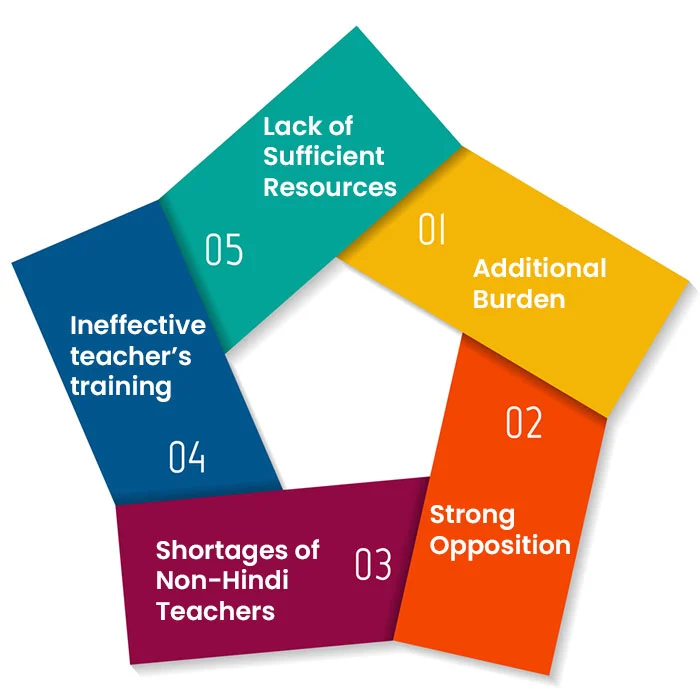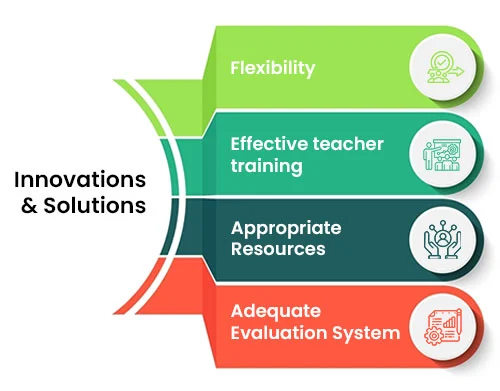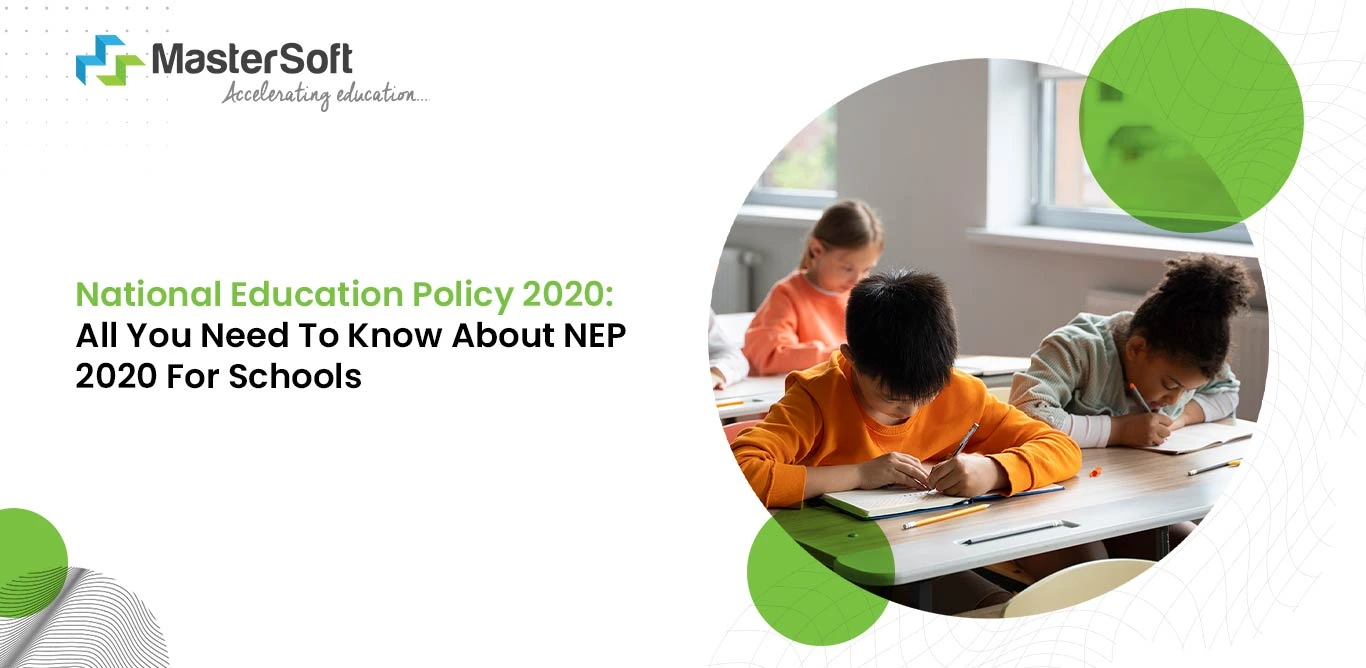07, March 2024
Unity and national integration are major nation-building objectives; hence, the Indian government took strategic steps to achieve the set goals. For instance, the first national education policy launched in 1968 introduced the three-language formula.
Moreover, the National Education Policy 2020 further incorporated the three-language formula as a move to foster multilingualism. Also, it is a crucial strategy to reinforce national unity and diversify instructional methodologies.
What is the Three-Language Formula?
The three-language formula is one of the vital approaches under NEP 2020 that necessitates all Indian students to learn at least three languages. It states that they will learn two native Indian languages, including one regional language. They will also learn English as the third and essential language.
All the Indian states will have the choice in terms of selecting their respective languages; therefore, it will help to avoid any language imposition. Besides, students will also have the freedom to choose three languages, of which two must be native to India.
Additionally, they have the liberty to change one or more of the three languages that they study in Grades 6 or 7. However, they must learn the basic proficiency level of the three languages by the end of secondary school.
Most importantly, the three-language formula highlights that the medium of instruction will be the local or regional language or mother tongue, at least until Grade 5. Nonetheless, the preferability of instruction in the mother tongue would be until Grade 8 and beyond.
Three Language Formula In NEP 2020
Origin of the Three-Language Formula
One of the most distinguishing features of India is its geographical and cultural diversity, as indicated by its customs and languages. However, the lingual differences led to a fragmented and disparate educational system.
For instance, regional languages and English served as teaching languages in separate states, while Hindi served as the main language in northern India. Consequently, there is no common language other than English, making inter-state communication difficult.
Therefore, the National Education Policy of 1968, under the Indira Gandhi government, launched the three-language formula. Furthermore, the policy stated the following:
- The use of a third language apart from Hindi and English will be a crucial component of modern India for educational purposes in Hindi-speaking states.
- The Kothari Commission modified the approach by recommending the promotion of the southern states’ language in Hindi-speaking states. Simultaneously, it recommended Hindi, English, and a regional language in non-Hindi-speaking states.
- The first language that the students will learn will be their mother tongue or a local language. The second language will be English or another modern Indian language in Hindi-speaking states. However, if it’s a non-Hindi state, the second language will be Hindi or English.
Advantages of the Mother Tongue in Primary Education
English as a primary medium of education has been the standard approach for the longest time while providing little to no emphasis on the vernacular language. Therefore, the promotion of the mother tongue in primary education is instrumental for the following reasons:
- Ease of Understanding: Students understand concepts much faster when they learn them in their mother tongue. Therefore, using students' vernacular language to teach will enable students to grasp complex subjects much more easily.
- Fulfilling Constitutional Obligation: Article 350 A of the Indian Constitution suggests that every state should strive to provide facilities for instruction in the mother tongue. In fact, children belonging to linguistic minority groups must have access to such facilities at the primary level.
- Developing a sense of pride: Learning and receiving education in their mother tongue may infuse a sense of ownership and pride. Furthermore, it will help to foster a sense of respect and pride for their culture and heritage from an early age.
- Increases interest in learning new languages: If schools introduce vernacular languages at the primary level, it will create a strong base for learning new languages. Therefore, as they progress to higher education levels, they will be eager to learn additional languages, thereby promoting multilingualism and national harmony.
- Rescuing the extinction of languages: UNESCO reported that 3000 to 4000 languages around the world face extinction. Furthermore, 10 percent of such languages that might go extinct in the next 50 years are from India. Therefore, an emphasis on multilingualism can help rescue the languages from going extinct.
Multilingual Education: A Comprehensive Guide
- Developing Competencies: The UNESCO World Conference on Arts and Cultural Education pointed out that awareness and expression are crucial competencies. Moreover, these are two of the capabilities that a child should possess, and building linguistic capacities in the mother tongue helps develop these competencies effectively.
- Promotion of Vernacular Languages: India has diverse and multiple mother tongues; therefore, all previous education policies promoted regional languages.
- Achieving Sustainable Goals: Early learning is one of the important components of the Sustainable Development Goals on hunger, health, education, and justice. Therefore, the mother tongue can contribute significantly to holistic education at the primary level.

Challenges of the Three-Language Formula
1. Additional Burden
The Indian education system followed an outdated approach, wherein teaching and learning were textbook- and exam-oriented. Hence, NEP 2020 is a landmark move to transform the academic structure and pedagogical methods.
However, the policy of learning new languages at an early age can create additional pressure on students at a young age. There have been several criticisms surrounding the children's inability to cope with such learning demands.
2. Strong Opposition
The state of Tamil Nadu has been against the three-language formula ever since the introduction of the policy. One of the underlying reasons is that state leaders and civil society want to protect their culture and heritage.
Besides, they find the three-language formula assimilationist in nature because they see that the policy might lessen the importance of the Tamil language. Furthermore, opposing Hindi is also a way to retain the English language, a renowned language of empowerment and knowledge.
Also, particular sections of the community and state expressed that the imposition of the Hindi language may lead to the elimination of English. Nonetheless, voluntary learning of Hindi has never been restricted by the state. The issue has always been the compulsion or imposition of a non-native language (Hindi).
3. Shortages of Non-Hindi Teachers
Many educationists and linguists highlighted the grave shortage of non-Hindi language teachers across the country. Therefore, it could pose a serious obstacle to the implementation of the three-language formula.
Besides, the policy promotes the inclusion of a third modern Indian language, but if the school does not have a qualified teacher, it will lead students to learn Hindi only.
4. Ineffective teacher’s training
Teachers play a significant role in implementing the policy; however, if they do not possess the necessary skills, it will be challenging to accomplish the goals of the three-language formula. Besides, most teachers in rural areas don’t understand or speak the children’s language; hence, there is limited communication between teachers and students.
Also, if teachers are from the child’s home community, they do not use the local language in teaching the curriculum as the textbooks are in the state language.
5. Lack of Sufficient Resources
Textbooks have been a major medium of instruction because they are usually in the state language, providing no choice for children to learn other regional languages. Although online resources are available, many schools do not use them due to financial constraints.

1. Flexibility
Students have a choice in selecting the third language that they want to learn as an additional language. Besides, the policy states that they must acquire a certain degree of proficiency in each of the three languages. However, the aim is to not create mounting pressure on them but to encourage them through a well-planned strategy.
2. Effective teacher training
The National Education Policy 2020 highlights proper training and preparation of teachers. For instance, teachers from various regional language backgrounds will undergo specialised training programmes.
Furthermore, these programmes will be instrumental in guiding them to learn about conducting multilingual classes. Also, they will learn modern pedagogical aids and language learning techniques, which help improve their instructional methods.
MasterSoft ERP: A Ready-To-Implement Solution Aligned With NEP Standards
3. Appropriate Resources
The policy recommends the use of digital resources to create teaching and learning materials in regional and native Indian languages. Furthermore, extensive use of technology is vital to remove language barriers, which will help facilitate the following:
- Improve educational planning and management.
- Facilitating access for Divyang students
- Utilising the teaching and learning content of various local or regional languages to facilitate multilingual classes.
- Leveraging the existing and emerging digital platforms to integrate multi-lingual learning and teaching.]
4. Adequate Evaluation System
The schools need to incorporate an appropriate examination system to assess students’ proficiency levels in all three languages. Likewise, they need to plan and implement mitigation strategies to meet their learning needs.
To wrap it up,
The three-language formula’s main objective is to break the linguistic barrier and promote national unity across the country. The policy is an important move towards introducing regional or local languages as instructional languages in the primary school stage.
Furthermore, it promotes one native Indian language (Hindi), one regional language of the state’s choice, and the English language.
Implement a multilingual classroom session with MasterSoft’s ERP software
Mobile: 08448010216
Email:info@mastersofterp.com













